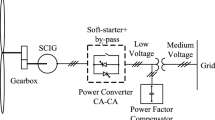Abstract
Materials in rotating machinery are typically subjected to vibratory loading from a number of sources which, in turn, is superimposed on mean stresses which result primarily from steady-state centrifugal loads. In addition, components subjected to vibratory stresses can sustain damage during manufacturing, break-in cycles, or during service such as from foreign objects, fretting, or other types of wear. The combination of vibratory and ‘steady’ stress levels can, for certain load levels, produce low cycle fatigue damage in addition to the damage produced from the high frequency (HCF) vibratory loading since the ‘steady’ stresses are actually low cycle fatigue (LCF) which results in one cycle for every startup and shutdown operation. Design for HCF is generally based on a Goodman diagram which takes into account the vibratory as well as the steady stress amplitudes for fatigue runout or fatigue under a given number of cycles. It does not, however, take into account the combined effects of LCF and HCF. In this investigation, the combined effects are demonstrated analytically by numerical examples which consider both the initiation and propagation phases of fatigue. In addition to the analysis of LCF/HCF interactions, considerations which must be accounted for in design are reviewed in light of a number of failures of components in service in U.S. Air Force fighter engines. A critical assessment of the concepts embedded in the use of the Goodman diagram is presented. Comments on the limitations on the use of a Goodman diagram for design are provided. Some suggestions are offered for the improvement of the design methodology for HCF which involve both damage tolerance considerations and methods for assessing and improving the margin of safety.
Similar content being viewed by others
References
Engine Structural Integrity Program (ENSIP), MIL-STD-1783 (USAF), 30 November 1984.
D.P. Walls, R.E. deLaneuville and S.E. Cunningham, Damage Tolerance Based Life Prediction in Gas Turbine Engine Blades under Vibratory High Cycle Fatigue, presented at the International Gas Turbine and Aeroengine Congress and Exposition, Houston, June 5–8, 1995; Transactions ASME, to appear.
R. John, T. Nicholas, A.F. Lackey and W.J. Porter, Mixed Mode Crack Growth in a Single Crystal Ni-Base Superalloy, FATIGUE 96, Elsevier Science, Oxford (1996) 399–404.
J. Goodman, Mechanics Applied to Engineering, Longmans, Green, and Co., London (1899).
A. Atrens, W. Hoffelner, T.W. Duerig and J.E. Allison, Scripta Metallurgica 17 (1983) 601–606.
S. Nishida, C. Urashima and H.G. Suzuki, in Fatigue 90, Vol. I, Materials and Components Engineering Publications Ltd, Birmingham, UK (1990) 197–202.
W.J. Bell and P.P. Benham, in Symposium on Fatigue Tests of Aircraft Structures: Low-Cycle, Full-Scale, and Helicopters, American Society for Testing and Materials, Los Angeles (1962) 25–46.
P. Greenfield and R.W. Suhr, The Factors Affecting the High Cycle Fatigue Strength of Low Pressure Turbine and Generator Rotors, GEC Review (3)3 (1987) 171–179.
M. Hawkyard, B.E. Powell, I. Husey and L. Grabowski, Fatigue Crack Growth under the Conjoint Action of Major and Minor Stress Cycles, Fatigue and Fracture of Engineering Materials and Structures 19 (1996) 217–227.
J.-Y. Guedou and J.-M. Rongvaux, in Low Cycle Fatigue, ASTM STP 492, Philadelphia (1988) 938–969.
J.R. Zuiker and T. Nicholas, On High Cycle Fatigue Design Limits under Combined High and Low Cycle Fatigue, International Journal of Fatigue (1996) to appear.
A. Palmgren, Zeitschrift des Vereins Deutscher Ingenieure 68 (1924) 339–341.
M.A. Miner, Journal of Applied Mechanics 12 (1945) 159–164.
J.A. Collins, Failure of Materials in Mechanical Design: Analysis, Prediction, Prevention, John Wiley & Sons, New York (1981).
R.W. Suhr, Fatigue and Fracture of Engineering Materials and Structures 15 (1992) 399–415.
K. Walker, in Effects of Environment and Complex Load History for Fatigue Life, ASTM STP 462, Philadelphia (1970) 1–14.
I.S. Raju and J.C. Newman, in Fracture Mechanics: Seventeenth Volume, ASTM STP 905, Philadelphia (1986) 789–805.
G.I. Barenblatt, Engineering Fracture Mechanics 28 (1987) 623–626.
K.J. Miller, Fatigue of Engineering Materials and Structures 5 (1982) 223–232.
J. Lankford, Fatigue of Engineering Materials and Structures 8 (1985) 161–175.
Author information
Authors and Affiliations
Rights and permissions
About this article
Cite this article
Nicholas, T., Zuiker, J.R. On the use of the Goodman diagram for high cycle fatigue design. Int J Fract 80, 219–235 (1996). https://doi.org/10.1007/BF00012670
Received:
Accepted:
Published:
Issue Date:
DOI: https://doi.org/10.1007/BF00012670




